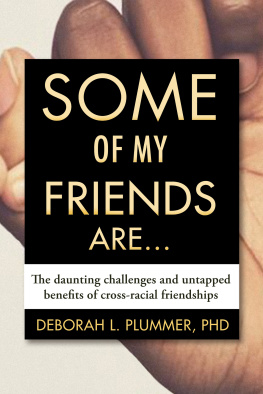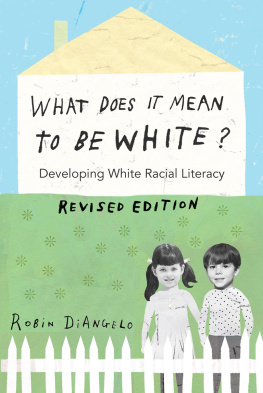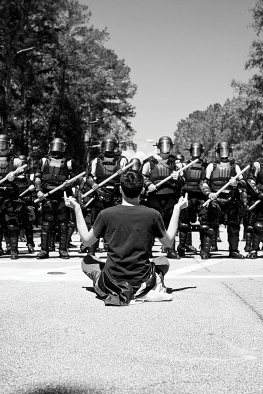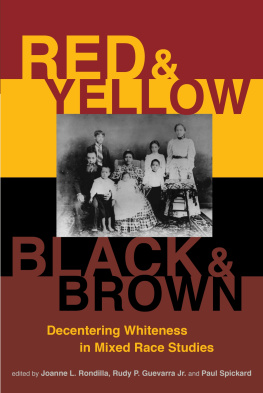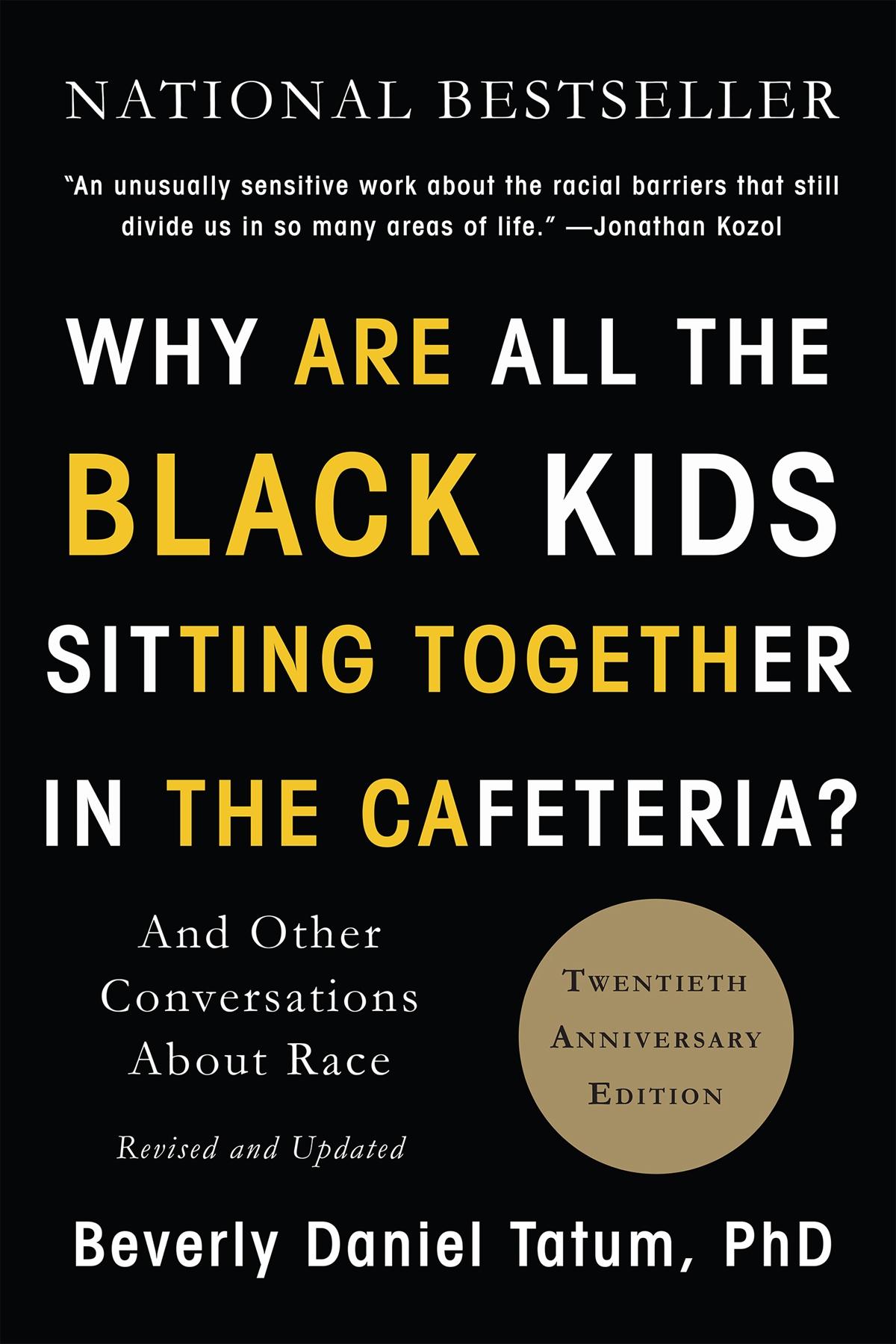Copyright 1997, 2017 Beverly Daniel Tatum
Hachette Book Group supports the right to free expression and the value of copyright. The purpose of copyright is to encourage writers and artists to produce the creative works that enrich our culture.
The scanning, uploading, and distribution of this book without permission is a theft of the authors intellectual property. If you would like permission to use material from the book (other than for review purposes), please contact permissions@hbgusa.com. Thank you for your support of the authors rights.
Basic Books
Hachette Book Group
1290 Avenue of the Americas, New York, NY 10104
www.basicbooks.com
Originally published in hardcover and ebook by Basic Books in September 1997
Third trade paperback edition: July 2017
Published by Basic Books, an imprint of Perseus Books, LLC, a subsidiary of Hachette Book Group, Inc.
The Hachette Speakers Bureau provides a wide range of authors for speaking events. To find out more, go to www.hachettespeakersbureau.com or call (866) 376-6591.
The publisher is not responsible for websites (or their content) that are not owned by the publisher.
Some names and identifying details have been changed to protect the privacy of individuals.
Library of Congress Cataloging-in-Publication Data
Names: Tatum, Beverly Daniel, author.
Title: Why are all the black kids sitting together in the cafeteria? : and other conversations about race / Beverly Daniel Tatum.
Description: New York : Basic Books, 2017. | Fully revised and updatedProvided by publisher. | Includes bibliographical references and index.
Identifiers: LCCN 2017014766 (print) | LCCN 2017017216 (ebook) | ISBN 9781541616585 (ebook) | ISBN 9780465060689 (paperback)
Subjects: LCSH: African AmericansRace identity. | WhitesRace identityUnited States. | African American childrenPsychology. | African American youthPsychology. | WhitesUnited StatesPsychology. | Race awareness in adolescenceUnited States. | Intercultural communicationUnited States. | Communication and cultureUnited States. | CommunicationSocial aspectsUnited States. | United StatesRace relations. | BISAC: SOCIAL SCIENCE / Ethnic Studies / African American Studies.
Classification: LCC E185.625 (ebook) | LCC E185.625 .T38 2017 (print) | DDC
305.800973dc23
ISBNs: 978-0-465-06068-9 (2017 paperback); 978-1-54161-658-5 (ebook)
E3-20170801-JV-NF
MORE PRAISE FOR
WHY ARE ALL THE BLACK KIDS
SITTING TOGETHER IN THE CAFETERIA
When I began my own journey of anti-racism, Beverly Daniel Tatums Why Are All the Black Kids Sitting Together in the Cafeteria was the first and most instructive work I discovered. Its anniversary editionwith timely new research, revisited institutional issues, and personal examples so fresh they seem to have come from the headlinesis the book that everyone in America needs to read right now. With clarity and grace, Tatum chronicles how our country has become so racially polarizedhow the methods and signifiers may have changed, but the world has not, sustaining inequities for people of color in terms of school segregation, law enforcement, economic obstacles, and voting rights. From the spate of police shootings to the challenge to Affirmative Action, from the rise of the Black Lives Matter movement and the parallel swell of hate crimes based on race, this updated version of a classic is the clearest illustration Ive found of how fear and anxiety in the declining White population of the United States has created a living environment of fear and anxiety for people of color. We dont talk about race in America, but we must start if we are going to heal this broken countryand Tatums book is exactly the conversation opener we should be using.
Jodi Picoult, #1 New York Times bestselling author of Small Great Things
Why Are All the Black Kids Sitting Together in the Cafeteria was a landmark publication when it appeared in 1997. Twenty years later this updated edition is as fresh, poignant, and timely as ever. Bias, explicit and implicit, limit options, produce deadly encounters, and gnaw away at the fabric of our social contract. Racism, prejudice, and discrimination remain active characteristics of life in our society, notwithstanding the prominence of African Americans, Latinos/as, Asian Americans, and Native peoples in the media, entertainment, sports, politics, and many domains of business. Beverly Daniel Tatum reminds us that against this backdrop individuals sometimes seek out others like themselves because it secures their sense of self in a world that often makes them feel insecure. As a result, group congregation becomes a means of flipping the power dynamics and affirming oneself in a social context. If you somehow missed this book in its original form, I recommend this revised edition to you. It remains a must-read.
Earl Lewis, president, Andrew W. Mellon Foundation
Beverly Daniel Tatum answers the question posed in the title of her book in a brilliant synthesis informed by history, developmental psychology, and great wisdom. Stereotypes, omissions, and distortionseach rooted in our nations history of slaverycause each of us to breathe the smog of racism. It is little wonder that Black adolescents rely on one another for social support as they navigate identity development. In the twenty years since Tatum first published her classic book, Black people have been disproportionately affected by the economic crisis of 2008, mass incarceration, and a backlash against affirmative action. In this revision, Tatum finds a way to remain hopeful as todays youth lead movements exposing racial hierarchies, race and class privilege, and seemingly invisible systems of oppression. This book should be required reading for every American.
Kathleen McCartney, president, Smith College
We read the original version of this book twenty years ago and learned a great deal about race, racism, and human behavior. This updated version provides even more insights about the racial, ethnic, and cultural challenges we face in American society, and particularly in higher education. What makes these insights so valuable is the authors ability to look at our problems from different perspectives and to challenge us to look in the mirror as we think about who we are and whom we serve. She gives excellent examples of leaders who succeeded during times of crisis, and of others who struggled. Any American leader wanting a deeper understanding of these issues should read this book.
Freeman A. Hrabowski III, president, University of Maryland, Baltimore County
Set today against the backdrop of a highly divisive and still persistently racialized societal landscape, this newly revised and updated publication is still a must-read classic. Tatum unpacks with moving narratives, the psychology that drives us all, as we grow up in largely homogenous communities, schooled in the nuances of difference that define too starkly our racial identities, even as we strive to learn how to embrace rather than distance [ourselves] from the many others that define our world. Just as this experienced psychologist and wise educational leader reminds us here that we cannot talk meaningfully about racial identity without talking about racism, so too must we learn from her words about how to talk and teach and dialogue across those boundaries, in the hopes of better realizing the potential of our diverse democracy.
Nancy Cantor, chancellor, Rutgers University-Newark
In 1997, Why Are All the Black Kids Sitting Together in the Cafeteria? changed the conversation about race and racism in our nation. Twenty years later, this new edition is sure to do the same, this time with thoroughly updated information about the growing ethnic, racial, cultural, and religious diversity that now characterizes the United States, as well as important insights about persistent barriers to authentic integration and shrinking opportunities for many segments of the population. Given the current sociopolitical context in which we find ourselves, a context too often defined by exclusion and the stubborn persistence of bigotry and racism, this new edition couldnt have come soon enough!



